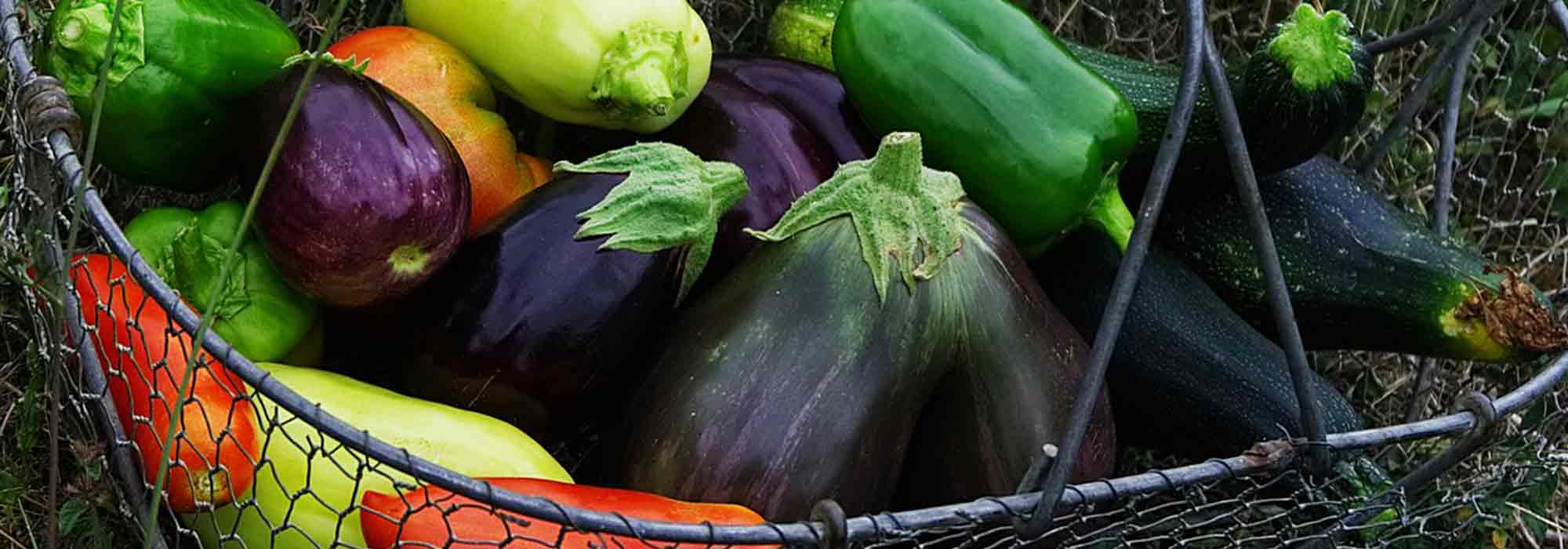
Fruit vegetables: 7 essential varieties
Best fruiting vegetables to grow in your kitchen garden
Contents
In the botanical sense of the term, a fruit-vegetable is the fruit of an herbaceous plant. Highly prized, they occupy a prime place in our vegetable gardens. In particular, tomatoes, aubergines, peppers, cucumbers, beans, courgettes, as well as squashes and pumpkins.
However, this does not refer to sweet fruits such as those produced by trees and bushes, or by fruit-bearing plants, but to varieties that are most often eaten in savoury preparations. Some of them, however, develop sweet flavours at ripeness, such as tomato and pepper.
Discover our selection of 7 essential fruit-vegetable varieties for your vegetable garden.
Tomato, fruit-vegetable star of our summer vegetable gardens
Tomato, Solanum lycopersicum, is an herbaceous liana plant from family Solanaceae. Depending on variety, tomato fruit takes very varied shapes, colours and sizes. Taste, nutritional and decorative qualities make tomato one of the most appreciated vegetable-fruits in both our vegetable gardens and on our plates. It is grown on balconies as well as in vegetable gardens, and can be eaten raw or cooked.
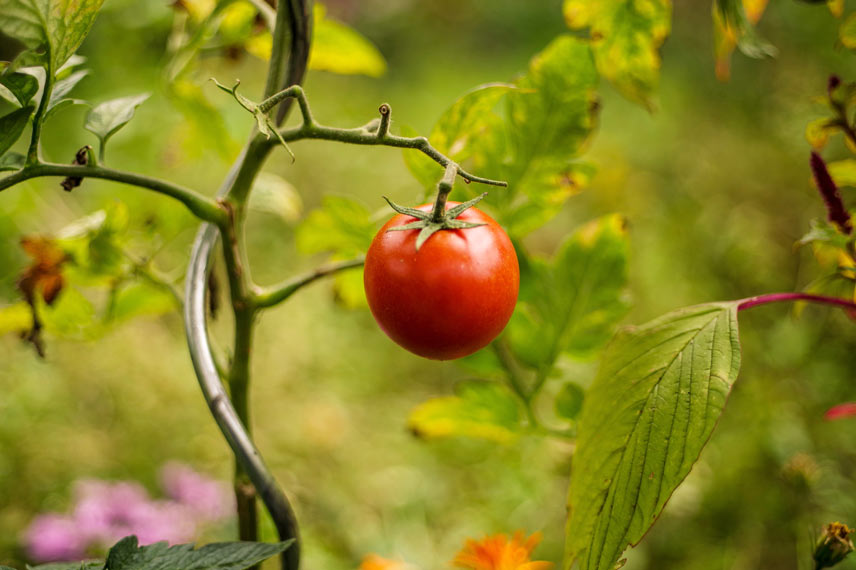
© Hans Ripa – Unsplash
Growing in the vegetable garden
This vegetable-fruit prefers rich, well-drained soils, although it can manage in ordinary soil. Tomato, however, needs plenty of sun and warmth to set fruit. Sow in March under cover (between 16 and 20°C) and plant out once risk of frost has passed (around mid-May). Tomato also needs regular watering, done with water at room temperature avoiding wetting the foliage, to help prevent fungal diseases (late blight). Depending on varieties, which can be early or late, tomato is harvested between 50 and 100 days after planting.
Which variety to choose?
There are many tomato varieties worth growing in the vegetable garden.
- Among early tomatoes, for example Reine des Hâtives, a very early and productive old tomato, Gold Nugget, a cherry tomato with small saffron-gold fruits, or Fandango F1, a very early variety with excellent flavour.
- Among main-season varieties, try the Green Zebra with an anise-green epidermis streaked with yellow, the well-known Noire de Crimée which offers a sweet flavour and brown-red flesh, or Rose de Berne which makes up for its low yield with exceptional flavour.
- Finally, among late varieties, for example Purple Calabash, a productive variety with beautifully ribbed fruits, Madagascar, a Malagasy cocktail tomato with bicoloured pink-and-yellow fruits, or tomate Ananas, an old American variety with large fruits variegated in orange and yellow.
Aubergine, the emblematic fruiting vegetable of Mediterranean regions
Aubergine, Solanum melongena, is a fruit-vegetable of the Solanaceae family. It produces a fleshy fruit with a subtle flavour that generally takes on a deep purple colour, although some varieties produce white, variegated, pink, green or even black fruits. Depending on variety, aubergine can take an ovoid, long or spherical shape. It is a fruit-vegetable much prized in Mediterranean cuisine. Furthermore, aubergine is rich in fibre and B vitamins.
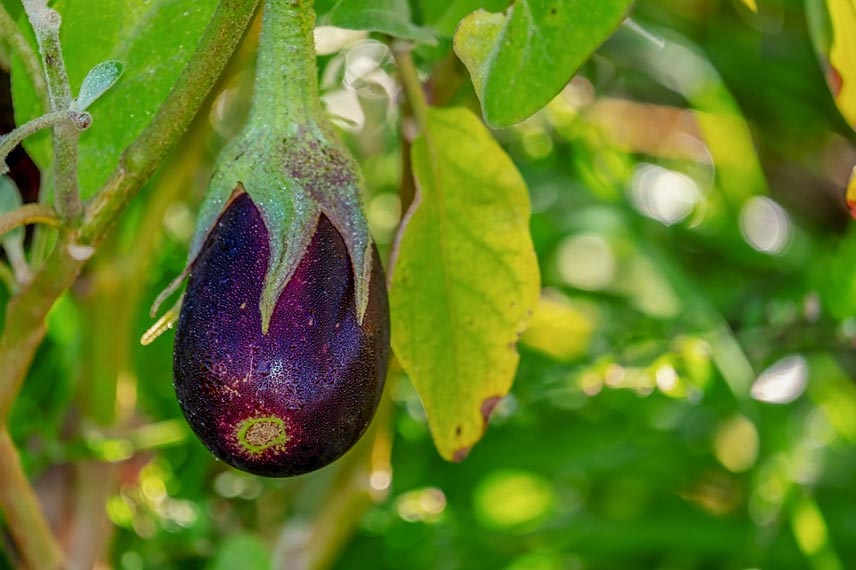
Growing in the vegetable garden
Aubergine is a plant relatively easy to grow, although it is demanding of heat and light. Indeed, this fruit-vegetable needs a lot of water to produce fleshy fruits. Aubergine plants are compact, making them suitable for growing in the vegetable garden as well as on very sunny balconies and terraces. Sowing is carried out under cover from February to May, for a harvest from July to October. Plant aubergine in open ground after last frosts, in soil that is well warmed, rich and light, in a warm, well-sheltered position. Weeding, hoeing and regular watering are then required.
Which variety to choose?
- Among the most popular aubergine varieties are Barbentane aubergine, an early variety with long deep-violet fruits and firm, flavoursome flesh, and Rania F1 with violet skin striate with cream-white whose flesh is sweet and melting.
- Among more unusual varieties, for example Clara F1, a hybrid variety producing white fruits with a delicate flavour, or Rotonda Bianca Sfumata Di Rosa, an Italian hardy variety with round fruits and white skin tinged with lavender-pink.
Discover other Vegetables by variety
View all →Available in 1 sizes
Available in 1 sizes
Available in 1 sizes
Available in 1 sizes
Available in 1 sizes
Available in 1 sizes
Available in 1 sizes
Available in 1 sizes
Available in 1 sizes
Available in 1 sizes
Courgette, a prized fruit-vegetable in southern cooking
Courgette, Curcurbita pepo, belongs to family Cucurbitaceae. It produces a fruit harvested young and tender to be eaten as vegetable. The fruit of courgette is generally cylindrical, sometimes spherical. This summer vegetable-fruit is highly prized in southern cuisine. Its male flowers are also edible, usually prepared as fritters. Low in calories, courgette is rich in provitamin A, B vitamins and mineral salts.
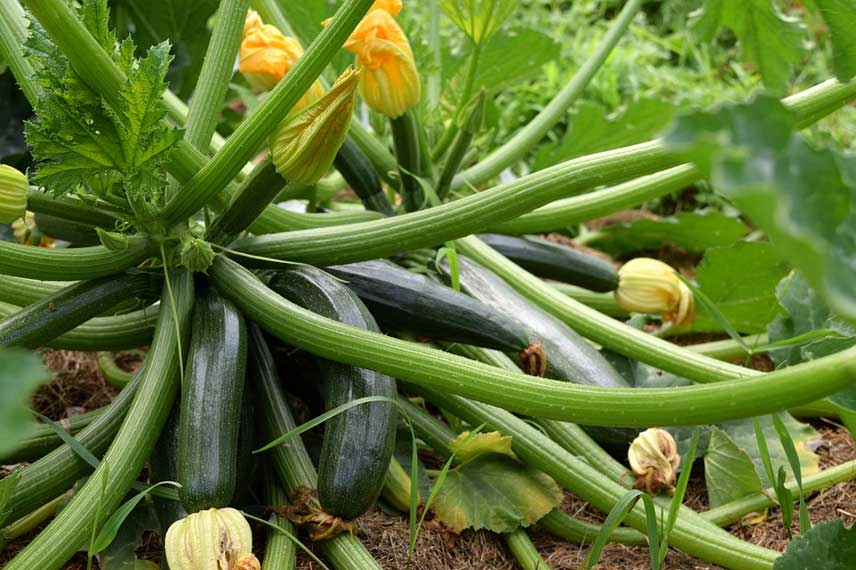
Growing in vegetable patch
Courgette is an easy-to-grow vegetable-fruit, even for beginner gardeners. Grow it in full sun, in loose soil, rich, deep and cool at surface. A summer mulch is very beneficial. Sow courgette under cover in spring (mid-May to mid-July), or direct outdoors after last frosts (mid-May to mid-July). Planting takes place from May onwards, when risk of frosts has passed.
Which variety to choose?
- Among many varieties of cylindrical courgettes, mention Alberello di Sarzana, an early Italian courgette, hardy and productive with long light-green ribbed fruits. The non-vining variety Gold Rush produces elongated fruits of a fine golden-yellow, with pale, flavoursome flesh.
- Among round courgettes, for example the courgette de Nice with round, green, speckled fruits. The courgette jaune One ball is an F1 hybrid variety, early and perpetual, with small round golden-yellow fruits.
Bell pepper, a sun‑loving fruit vegetable of tropical origin
Bell pepper, Capsicum annuum, is a sweet pepper from the Solanaceae family. It produces large hollow fruits, generally cube-shaped and green, yellow or red in colour. This vegetable fruit of tropical origin is very rich in vitamin C and provitamin A. It is eaten as a vegetable, raw in salads or cooked, grilled, stuffed or candied. Widely used in southern cooking, bell pepper ranks among key vegetables of summer vegetable gardens.
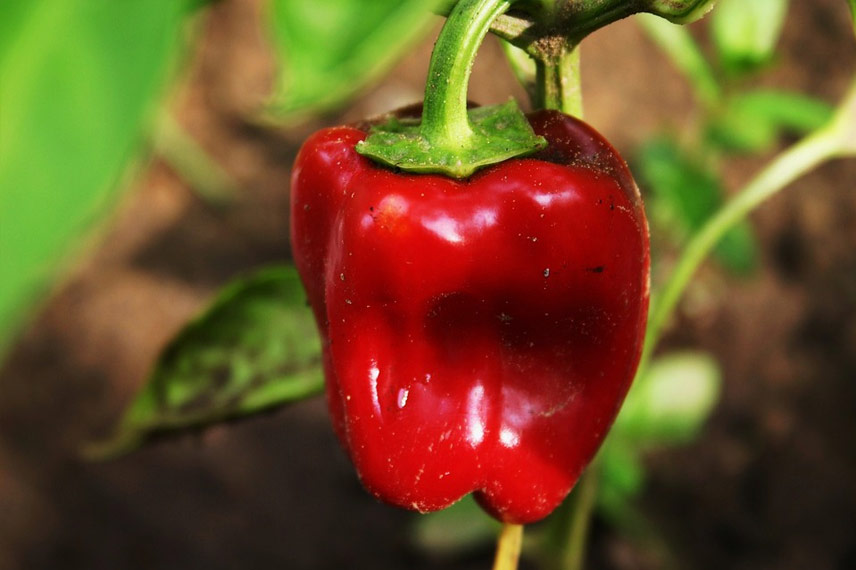
Growing in the vegetable garden
Native to South America, bell pepper needs heat and light to thrive. It is grown in rich, well-draining soil, in a sunny position protected from cold winds. Bell pepper is sown in March under heated cover at 25°C. Planting outdoors takes place once risk of frost has passed (mid-May to June). Staking is not essential, except in windy situations. Weeding, hoeing and occasional watering are also to be expected.
Which variety to choose?
- Among more classic peppers is Marconi Rosso, an early variety with long fruits whose sweet flesh turns from green to red.
- For something more original, discover the Sweet Banana pepper, a productive variety with elongated fruits that turn yellow, then orange and red.
- Among small-fruited peppers, consider Cuneo Jaune with square fruits offering thick, flavoursome flesh, as well as the mini Chocolate Bell NT pepper, a miniature-fruited variety with brown-coloured fruits and sweet, fruity flesh.
Cucumber, a fruit-vegetable with refreshing properties
Cucumber, Cucumis sativus, belongs to Cucurbitaceae. It produces a fruit prized for its refreshing character. This fruit-vegetable is thirst-quenching, gorged with water and is widely grown in Mediterranean regions. Eaten raw in salads or in cold soups. Cucumber is low in calories but very rich in vitamins and minerals. It is also known to be a powerful antioxidant.
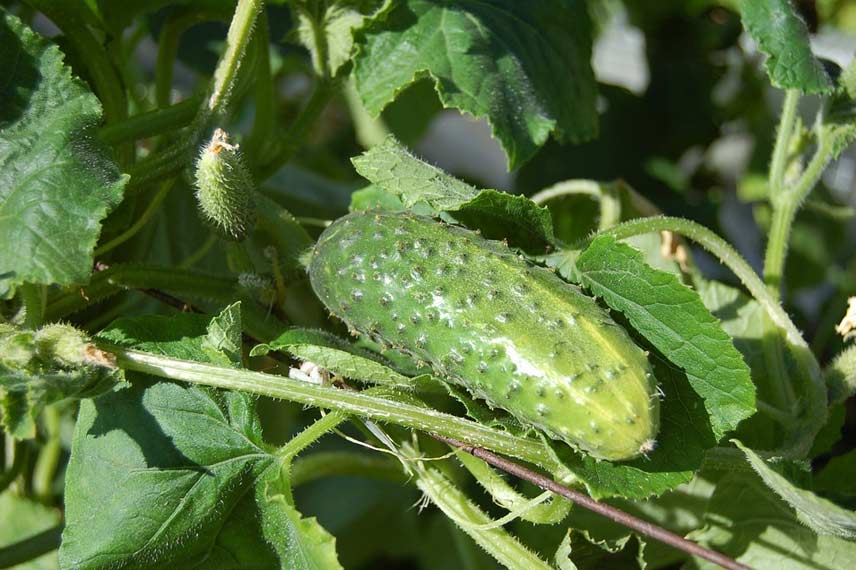
Growing in vegetable garden
To develop well, cucumber requires a sunny position and abundant watering. Heavy-feeding vegetable, it is grown in rich soil, loosened and enriched with ripe compost. Some weeding and a thick mulch are necessary. Sow cucumber under cover between April and mid-May. Once risk of frost has passed, they can be sown in place (mid-May to June). Planting also takes place when frosts are over, usually from mid-May.
Which variety to choose?
- Among early varieties, the productive Carmen cucumber with long fruits.
- Heirloom cucumber varieties include quality types, such as Le Généreux, hardy, mild and non-bitter, or the Long Anglais which produces thorny fruits with firm, crisp flesh.
Squashes, the fruit-vegetable star of autumn
Squash, also called pumpkin and winter squash, is a fruit vegetable belonging to the large family Cucurbitaceae. It produces large, compact fruits, eaten in autumn and throughout winter. Squash comprises several species, including Cucurbita pepo, Cucurbita moschata and Cucurbita argyrosperma. Depending on species, squash takes many shapes and colours (green, red, yellow, black) and can be smooth, ribbed and even warty. Squash features in many savoury and sweet recipes.
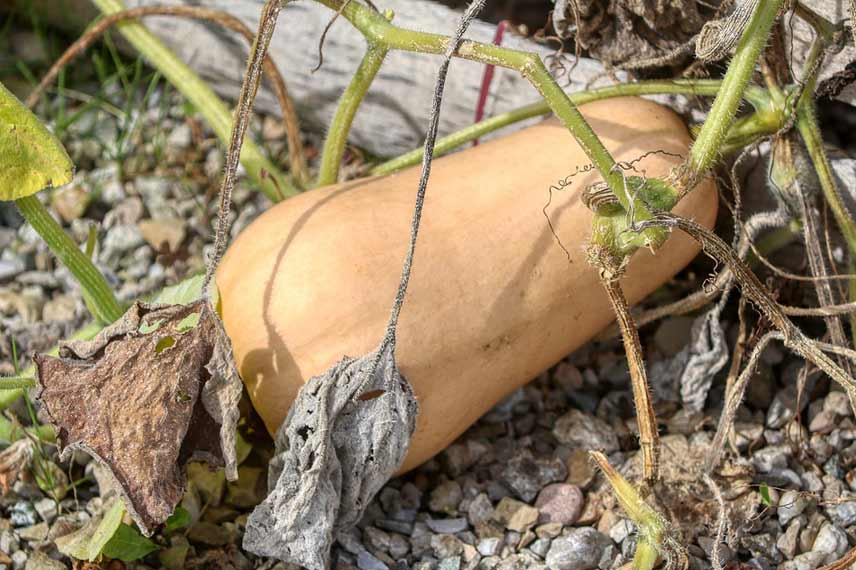
Growing it in the vegetable garden
All squashes are grown in sunny positions. Heavy-feeding vegetables, they prefer rich, friable, deep and cool soils. Squash plants should be mulched at height of summer to retain soil moisture. Weeding and hoeing are necessary at start of cultivation. Sowing of squashes is carried out under cover between mid‑April and mid‑May. Planting takes place from May onwards, outside periods of frost.
Which variety to choose?
- Among Cucurbita pepo, note the White pattypan squash, a traditional variety shaped like a star with a subtle artichoke background flavour.
- Among Cucurbita moschata, find the Waltham Butternut, club-shaped, offering flesh with a delicate hazelnut flavour.
- Among Cucurbita maxima, discover the Yellow Gros de Paris pumpkin, a vigorous variety producing very large fruits with tender, sweet flesh.
Bean, a fruit vegetable known throughout the world
Bean, Phaseolus vulgaris, is a dwarf plant or a liana that is part of family Fabaceae. It is grown for its immature pod (in case of green beans) or for its seeds (in case of shelling beans). Rich in vitamins and trace elements, beans are very rich in plant proteins, particularly dried beans. This fruit vegetable bearing pods features in cuisines of many regions worldwide.
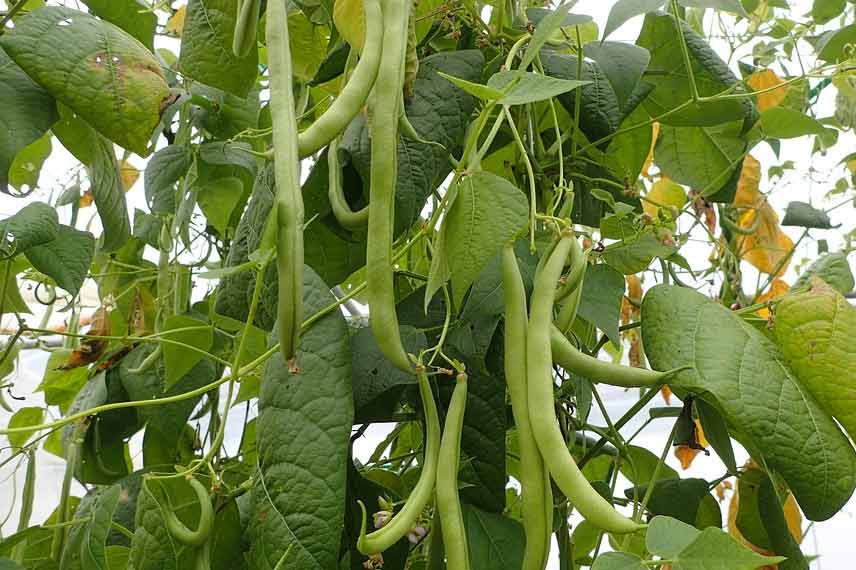
Growing in vegetable garden
Very easy to grow, bean requires plenty of heat and sun to develop. Undemanding, it adapts to all soil types, although it prefers light, cool and slightly calcareous soils. Earthing up young plants is necessary, and soil can be mulched once young plants are well developed. Sowing of beans is carried out by direct sowing outdoors from April in the Midi, and from mid-May to mid-August once frosts are no longer a risk in other regions.
Which variety to choose?
- Among dwarf filet and mangetout beans, mention Dwarf filet bean Aiguillon, a high-yielding variety, and Purple Queen with violet pods and excellent yield.
- Among dwarf shelling beans, find Flageolet Blanc de Flandres, an heirloom variety with beautiful large white reniform, flattened seeds, and Canadian Wonder, a variety with dark burgundy-coloured seeds.
- Among climbing filet and mangetout beans, discover Goldmarie butter mangetout with blond, flat and wide pods.
- Finally, among climbing shelling beans, mention Soissons gros blanc, renowned for its white, flat seed with very fine epidermis.
- Subscribe!
- Contents
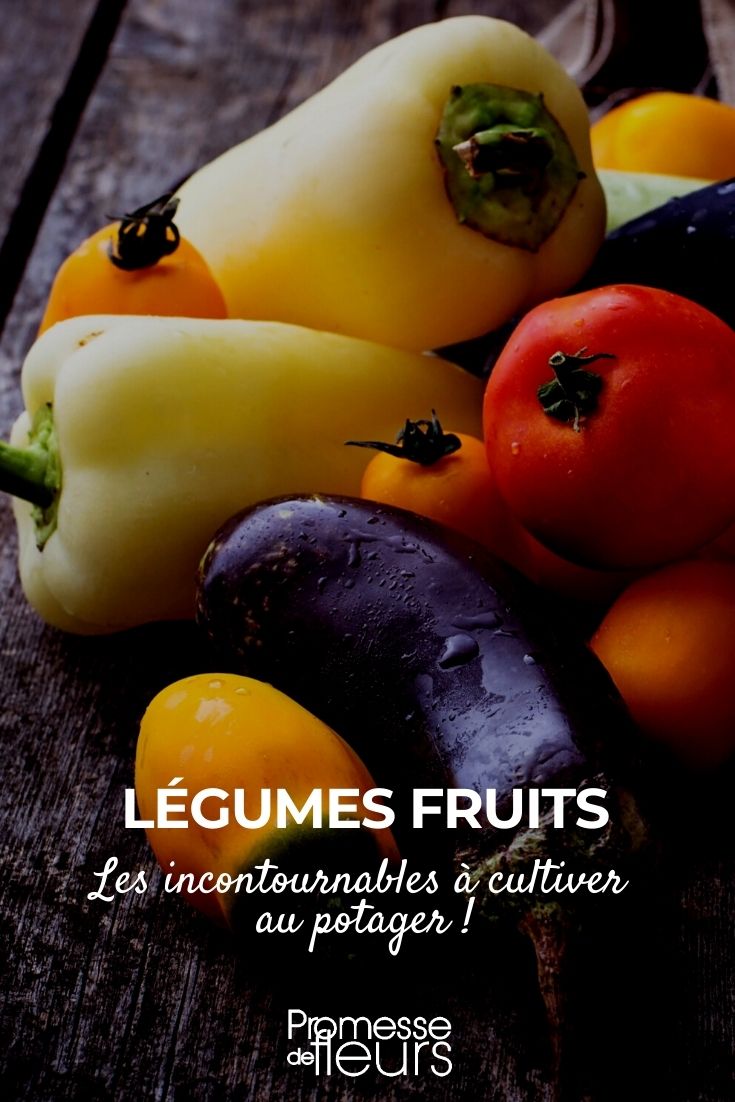































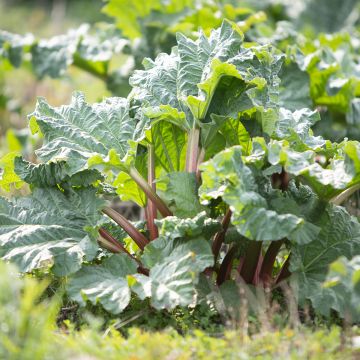
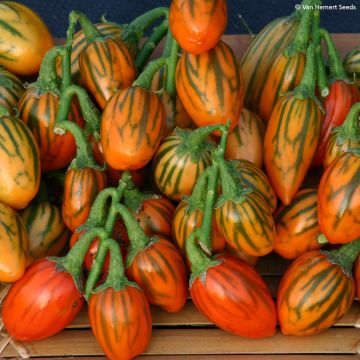
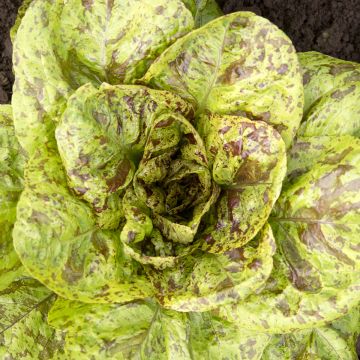
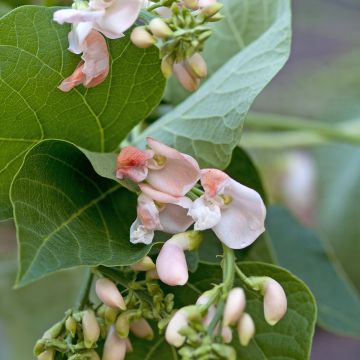
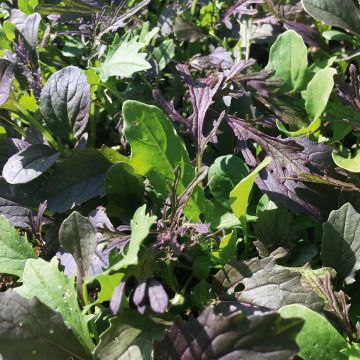
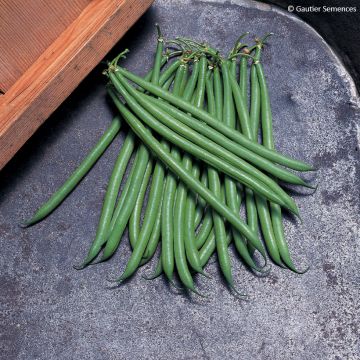

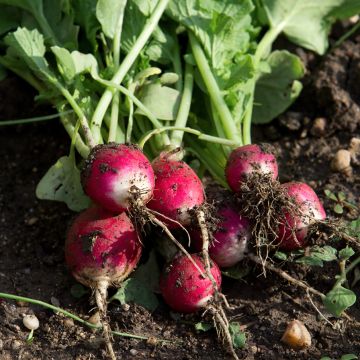
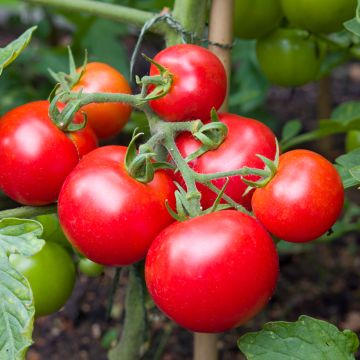
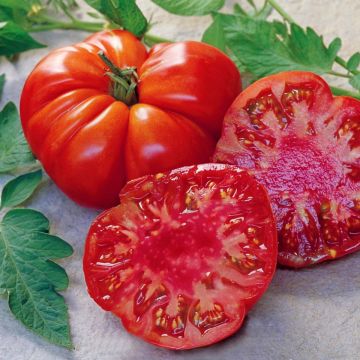
Comments